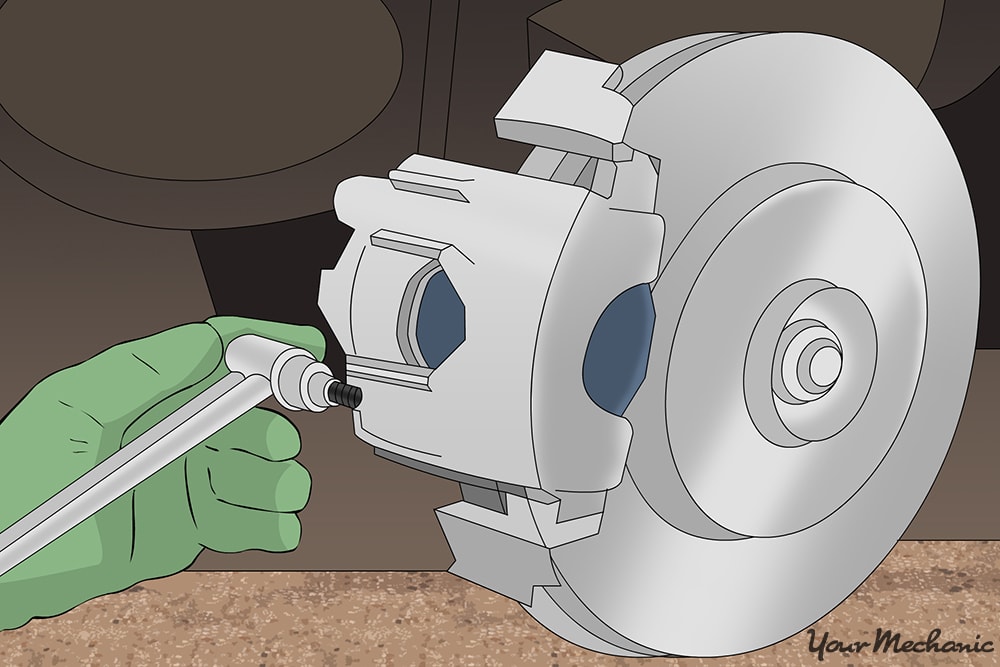
Remove the Brake Caliper Mounting Bolts. Raise your vehicle off the ground to place jack stands under it.

Removing the Old Caliper 1.
How to change a front brake caliper. How to install a brake caliper. Learn how to change your brake caliper correctly and safely. Learn the process of taking them off the correct torquing proce.
Removing the Old Caliper 1. Raise your vehicle off the ground to place jack stands under it. Place your jack under the side of your vehicle so.
Take off the wheel thats in front of the brake caliper youre replacing. Use a tire iron or a ratchet to loosen the. Remove the 2 bolts on the.
It this video I show you how to repair and rebuild a car brake caliper. Refurbishing a brake caliper is a quick cheap and easy DIY job. SUBSCRIBE for mor.
Remove the Brake Caliper Mounting Bolts. Identify the caliper that is to be replaced. Only replace one caliper at a time.
This will help control the brake fluid leakage and confusion while the job is being done. Using a wrench or socket remove the caliper slide bolts. The caliper is connected to a carrier which is connected to the cars hub.
While you can replace calipers individually the pads and discs always need to be replaced in pairs across the axle. Do not attempt to change the caliper unless you either know what youre doing or you have expert supervision. This will cause the brake calipers not to release properly when you release the handbrake.
To fix this you can try to lubricate the handbrake cable and the arm on the caliper and move it backward and forward a hundred times to see if it gets better. In the worst case you have to replace the parking brake cables or the caliper. Adjusting Your Brake Pads 1.
Check your brake pads before you make any adjustments. The brake pads are the pads that clamp down on the front tire. Squeeze the brake lever to see where the pads hit the rim.
Both brake pads should be coming into contact with the rim. Use an Allen wrench to. If compressing the front caliper piston place an old brake pad in place on the piston of the caliper.
Using the C-clamp place the jaw end on the back side of the caliper and the screw side of the clamp against the brake pad. Screw the C-clamp down gently to ensure the piston is retracting into the bore. Often a simple C-clamp can be used.
To remove a caliper piston that has become seized the hydraulic pressure of the brake system itself can be used. Remove the caliper from the disc and pump the brake pedal to move the piston past the corroded portion. Now you should be able to disassemble and rebuild it.
Place the inboard pad against the piston and center the C-clamp jaw on the pad. Locate the clamp screw on the back side of the caliper. Open the bleeder and retract the piston.
Connect one end of the drain tube to the bleeder screw and place the other end in a catch jar. Outside of brake pads brake rotors and calipers which are more expensive and often more complicated to replace than pads have varying life cycles. Simply servicing your brake fluid by regularly flushing can extend the life of calipers by preventing corrosion from within the system.
Brake rotors should either be turned or machined flat on a brake lathe or replaced with a new rotor. Opportune Times To Replace A Brake Caliper. Whenever any brake work is being performed on your car whether thats pads rotors or a fluid flush the calipers should be thoroughly inspected for any possible needs.
This is the most opportune time to check for corrosion leaks or any signs of damage. Grease the caliper slide pins with a silicone-based grease. Slide the caliper over the brake pads and onto the caliper bracket before installing the guide pin bolts.
Using a wrench to counter the guide pin torque the caliper guide pin bolts to approximately 50-55 ftlbs front or 25-30 ftlbs rear. If your vehicle has squishy-feeling brakes get the air out of the lines by bleeding the brakes - find out how to DIY with these instructions. What we dont recommend is waiting to replace the brake pads for weeks or months after the first warning signs emerge or considering properly functioning brakes anything less than a top priority.
Block the rear wheels and loosen the front lug nuts a turn or two with the lug wrench. Place the jack under the center crossmember and raise the front wheels off the ground. 2 Place the jack stands under the frame on both sides of the car behind the front wheels and carefully lower the car onto the stands.
Front brakes usually wear out more quickly than the rear brakes which could either be disc or drum brakes so they need to be changed more often. You need to change brake pads when they get too.